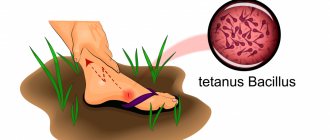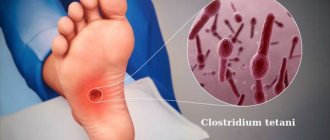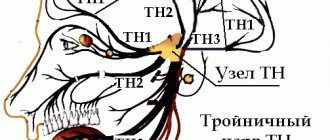Symptoms
Typically the incubation period lasts four days, but can vary from 2 to 10 days. The most common symptoms are a stiff neck, high fever, sensitivity to light, confusion, headache and vomiting. Babies also often experience bulging fontanelles and lethargy. A less common but even more severe (often fatal) form of meningococcal infection is meningococcal sepsis, which is characterized by a hemorrhagic rash and rapidly developing circulatory collapse. Even when diagnosed and properly treated in the early stages of the disease, 8%–15% of patients die, usually within 24–48 hours of symptom onset. If left untreated, meningococcal meningitis is fatal in 50% of cases. In the 10% to 20% of people who survive, bacterial meningitis can cause brain damage, hearing loss, or disability.
Meningococcal infection and meningitis
There is one infection in the ambulance that no one wants to deal with. Its danger is that a serious illness can develop in a matter of hours and even minutes.
, but it is not always possible to save the patient. We will talk about meningococcal infection.
Meningococcus
(Neisseria meningitidis) refers to diplococci (“double cocci”), by the way, they also include
gonococci
, the causative agents of gonorrhea (Neisseria gonorrhoeae).
Meningococci under a microscope.
Meningococci “live” in the nasal cavity and are transmitted by airborne droplets
, but they are very “gentle” and die outside the human body within 30 minutes.
On average, meningococcus is present in 1-3% of the population
and up to 25% in epidemic foci.
The peculiarity of the infection is that the number of healthy bacteria carriers is hundreds of times (!) greater than the number of patients (approximately 1 patient per 200 carriers
).
Clinical picture of meningococcal infection
There are 4 main forms of infection.
- Asymptomatic carriage
.
Nothing manifests itself or small chronic inflammatory changes in the nasopharynx are possible. The number of asymptomatic carriers is 99.5%
of all infected people, and the three subsequent forms of infection cover no more than 0.5% of infected people. - Meningococcal nasopharyngitis
(from nasis - nose and pharynx - pharynx), or inflammation of the nasopharynx. Simply put, a common runny nose. According to the clinical picture, it is impossible to distinguish a runny nose caused by meningococcus from a runny nose with another pathogen. The diagnosis is made when mucus from the nasopharynx is looked at under a microscope and characteristic diplococci are seen in large quantities. - Meningococcemia
(“meningococci in the blood”), that is, meningococcal sepsis. More on this and the next form below. - Meningitis
(inflammation of the meninges).
Meningococcemia
How it develops
In some patients, meningococcus overcomes local immunity barriers and enters the blood, where it dies and disintegrates. Massive disintegration of meningococci with release of endotoxin
(strong vascular poison) leads to catastrophic consequences.
Blood clotting begins, and microthrombi form throughout the circulatory system, obstructing blood flow. This is called DIC syndrome
("disseminated intravascular coagulation syndrome", the word "disseminated" means "scattered, widespread"). As compensation, the body's anticoagulant system is activated and the blood thins. By this time, both the coagulation system and the anticoagulation system are exhausted.
As a result, chaotic multidirectional changes occur in the hemocoagulation system
- blood clots and bleeding.
Extensive hemorrhages appear in various organs and tissues, including the adrenal glands. The adrenal glands normally produce corticosteroid hormones, which increase blood pressure and suppress inflammation and the immune system. Hemorrhage into the adrenal glands
leads to acute adrenal insufficiency with an additional drop in already reduced blood pressure.
A rash due to meningococcemia and there are multiple hemorrhages in the skin
.
How it manifests itself
Meningococcemia begins suddenly or after a runny nose. When meningococci enter the blood, chills occur and the temperature rises to 38-39° C
, pain in muscles and joints, headache, and often vomiting appear.
At the end of the first - beginning of the second day, the most characteristic symptom appears - a hemorrhagic rash
, which is called “
star-shaped
”.
Star-shaped rash due to meningococcemia
. Please note: the rash does not disappear with pressure (it is convenient to check with a glass).
The elements of this rash have irregular contours, “star-shaped”, “processed”, on a pale skin background they resemble a picture of a starry sky
.
The rash is located mainly on sloping (lower) places
- on the lateral surfaces and lower part of the body, on the thighs.
Necrosis
appears in the center of hemorrhages , the rash darkens, becomes larger, its number increases, and sometimes becomes confluent, affecting large areas. Most often these are distal (remote) parts of the limbs (
in a child), tips of toes, hands.
Necrosis (death) and dry gangrene of the ears, nose, and phalanges of the fingers are possible. The appearance of a rash on the face, eyelids, sclera, and ears is also an unfavorable sign. If a rash occurs in the first hours from the onset of the disease, this is a prognostically unfavorable sign
and is typical for very severe forms of the disease.
Child with meningococcemia
.
Acute adrenal insufficiency due to hemorrhage in the adrenal glands resembles the clinical picture of any shock: the patient is in serious condition, pale, wet, the upper blood pressure is 60-80 and below.
If you find signs of shock or a “star-shaped” rash in a patient, call a team immediately
intensive care or resuscitation team.
The principles of treatment
for meningococcemia are as follows:
- a large dose of glucocorticoid hormones
intravenously. Goal: dampen the body's overreaction to meningococcus and stop the breakdown of bacteria, maintaining blood pressure levels.
Battle of neutrophils and meningococci
. Cells of the immune system capture meningococci and dissolve them, but at the same time die and disintegrate themselves.
- antibiotic
, which stops the development of bacteria, but does not destroy them. Such antibiotics are called bacteriostatic (chloramphenicol, etc.). Goal: Bacteria should not die and undergo decay to release endotoxin, but also should not be allowed to multiply under conditions where the immune system is suppressed by the administered glucocorticoids. - treatment of shock
: intravenous infusion of saline, rheopolyglucin, etc.
Meningitis
It is possible for meningococcus to enter various organs and tissues, but more often it gets into the brain - meningitis
.
Meningitis is an inflammation of the meninges. Inflammation of the brain matter is called encephalitis
.
Meningitis also begins acutely with chills and fever. Characteristic signs of meningitis
:
- Strong headache
, - increased sensitivity
to all external stimuli (light, sounds, touch). Any sound or bright light causes pain. - vomiting
(due to increased intracranial pressure), which does not bring relief. (Food poisoning gets better after vomiting.) - disturbances of consciousness (drowsiness, confusion).
- meningeal symptoms
(as determined by the health care provider) are associated with the fact that muscle regulation is disrupted and extensor tone begins to predominate.
The neck becomes rigid
(that is, stiff, hard, and difficult to bend). A couple of symptoms are given below as an example.
Kernig's sign
. In a patient with meningitis lying on his back, it is impossible to straighten the leg at the knee joint, which was previously bent at a right angle at the knee and hip joints (normally this can be done). In newborns, Kernig's symptom is physiological and persists for up to 3 months.
Upper Brudzinski's sign
consists of bending the legs and pulling them towards the stomach while attempting to bend the head towards the chest. Normally, the legs should not bend.
In advanced cases (which should not happen!) the patient takes a forced “ cooper dog”
"or "
cocked hammer
".
Characteristic posture of the patient
with advanced meningitis. The head is thrown back. Picture from here.
Meningitis is no joke. As Komsomolskaya Pravda reported, in 2005, a paramedic hanged herself
Zhodino ambulance station Svetlana Koidan.
This happened immediately after a commission meeting at which she was accused of the death of an 18-year-old boy. The patient turned out to have atypical meningitis
, and only the third ambulance took the patient to the hospital, but it was too late. Svetlana Koidan traveled for the second time. Meningitis is considered atypical in the absence of headache and neck stiffness.
Meningitis can be caused by both bacteria and viruses, and can occur secondary to malignant tumors and connective tissue diseases. 80% of all bacterial meningitis is caused by just 3 bacteria:
- Haemophilus influenzae
type b most often becomes the causative agent of meningitis in children under 5 years of age. - meningococcus
- more often in schoolchildren. - pneumococcus
- in older people.
Thus, it is highly likely that
that the 18-year-old boy's meningitis was caused by meningococcus. True, there was no information about the pathogen in the press.
Finally, read the translated article from the newspaper “Zvyazda”
.
When I was studying, Anatoly Astapov
headed the Department of Children's Infectious Diseases of the Belarusian State Medical University and gave lectures to us. I remember that it was interesting.
Meningococcus becomes active during influenza epidemics
Cold and flu season is a very favorable time for the active spread of an infection such as meningitis. It is its pathogens that pass from the carrier of meningococcus to a healthy person when coughing and sneezing. Moreover, most often the carriers are adults, without even knowing it, and mostly children get sick. According to Anatoly Astapov,
, there are 10-15 cases of morbidity per 100 thousand children, and only one among adults. We asked Anatoly Arkhipovich to tell us about this disease in more detail.
Meningitis can be caused by a variety of pathogens: meningococcus, pneumococcus, Haemophilus influenzae and even the herpes simplex virus, which usually affects the mucous membrane of the lips. The insidiousness of this infection
is that the initial clinical manifestations of the disease resemble a cold or flu. For example, this happens with such a clinical form of meningitis as nasopharyngitis, when the back wall of the pharynx becomes inflamed. Patients cough, have a stuffy nose, and a sore throat. At this stage, patients are most often diagnosed with acute respiratory disease. However, incorrect and untimely diagnosis can further lead to inflammation of the meninges.
The most severe form of the disease is bacterial meningitis.
. In this case, the disease begins suddenly. For example, a child goes to bed completely healthy, but at night he suddenly becomes restless and feels muscle weakness; if verbal contact is possible with the child, he will complain of a severe headache. Within an hour, the temperature usually rises to 39-40°, after 5-6 hours vomiting occurs. But the most dangerous symptom that you definitely need to pay attention to is the appearance of a rash. At first these are pale pink stars, but it is during the first day that they appear in 80% of patients. The rash will get larger. And if it is present, it is imperative to call the doctor again, since the primary diagnosis before the rash can be made as an acute respiratory disease.
Rash due to menigococcemia
.
— Why is this form of meningitis dangerous?
- Because toxic-septic shock
due to hemorrhage in vital organs and, above all, in the adrenal glands. This shock causes death in 5-10 percent of patients. Therefore, the sooner parents seek medical help, and the sooner an appropriate diagnosis is made, the greater the chance that we will save a sick child. But in any case, hospitalization will be required and parents should not refuse it.
A child with a hemorrhagic rash.
Element of hemorrhagic rash.
Extensive damage due to meningococcemia.
— Are there vaccinations against meningitis and what general preventive measures can be taken to avoid contracting this infection?
— Vaccinations available
. But only against meningococcus types A and C. And in our republic, type B meningococcus has been circulating for a long time, for which there is no vaccine. So it makes sense to get vaccinated for those people who travel to countries in the meningitis zone. For example, in certain regions of Africa, where the disease is caused by meningococcus type A and it is advisable to be vaccinated against it.
Meningitis belt
(according to WHO).
Among other preventive measures, I would recommend having fewer contacts during an epidemic and attending social events less often. In order not to get sick, you need to get rid of chronic diseases of the nasopharynx - pharyngitis, tonsillitis, laryngitis.
I would also like to draw the attention of parents to such a circumstance as holding family celebrations
. Infection is most often associated with them. For example, the birthday of a one-year-old toddler is celebrated. Parents invite guests, they try to babysit the baby, breathe on him, caress him, and someone among them may be a carrier of meningococcus. Young children have a weak immune system and are very sensitive to such infections. As a result, the baby becomes infected and after 2-5 days he develops clinical symptoms of the disease.
The fewer contacts a little person has with adults, the less likely it is that he will stumble upon a source of infection and get a serious illness.
An important preventive measure is to identify carriage
. When cases of meningitis appear, pediatricians examine the source of infection, epidemiologists identify contact people, take swabs from their nasopharynx, try to isolate meningococcus, and then treat them with antibiotics if meningococcus is present.
— Do patients who have had meningitis then need to follow certain rules?
“As for this infection, our department has set itself the task of preserving not only the patient’s life, but also its quality.
I note that meningitis is an inflammation of the membranes around the brain, and to some extent, inflammation of the brain. Therefore, although rarely, the consequences of a previous illness can be changes of organic origin. Therefore, to prevent these changes from becoming stronger, we carry out clinical examination of those who have recovered from the disease.
. After the little patient is discharged a month later, we invite him and his parents to our dispensary office. Before this, we recommend that you consult your child with an ophthalmologist and audiologist to check his hearing and vision and be sure to do an electroencephalogram.
We observe the patient for two years at certain intervals. And if we see that there are some neurological changes, then we hospitalize the patient and conduct a course of rehabilitation treatment.
But, unfortunately, and I’m just offended to talk about this, almost half of our former patients do not come for medical examinations. But there have been cases when, after 2-3 years, the mother comes running and says that the child suffered meningitis, and now convulsions have begun, and the doctors make a diagnosis of epilepsy. But we can’t help anymore, time is lost
and there are those changes that cannot be reversed.
Olga Shevko, newspaper “Zvyazda”, https://www.zvyazda.minsk.by/
.
Now you understand how a harmless celebration of a family celebration with your baby can end if one of the 1-3% of infected carriers is among the guests. Be careful.










